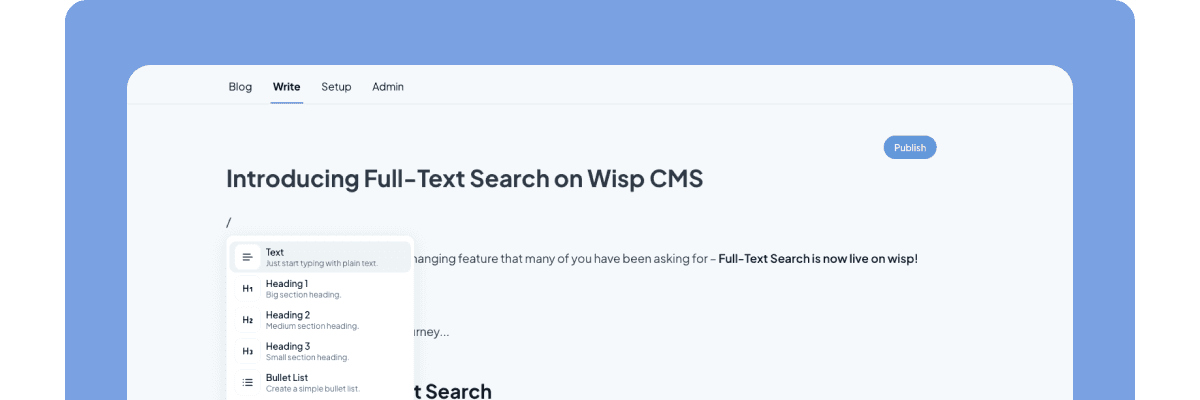 You've set up authentication in your Next.js application, implemented all the right components, and yet users complain about confusing flickering states during login. Or perhaps you've spent hours debugging why your redirect happens before the session cookie is fully available. If these scenarios sound familiar, you're not alone.
You've set up authentication in your Next.js application, implemented all the right components, and yet users complain about confusing flickering states during login. Or perhaps you've spent hours debugging why your redirect happens before the session cookie is fully available. If these scenarios sound familiar, you're not alone.
Session management in modern web applications can be deceptively complex, especially when dealing with client components in frameworks like Next.js. The useSession() hook offers a solution to these challenges, but leveraging it effectively requires understanding its nuances.
Understanding useSession() and Its Importance
The useSession() hook is a fundamental tool for managing authentication states in Next.js applications. It provides critical session data that determines if users are signed in and whether the session has fully loaded.
When you call useSession(), it returns an object with two key properties:
const { data: session, status } = useSession();
Here, session contains the current user's session object (including details like email and last active time), while status indicates the session state as one of three values: loading, authenticated, or unauthenticated.
Key Returns from useSession()
Understanding the values returned by useSession() is essential for implementing effective session management:
status - Indicates whether the session is:
loading: Session data is being fetchedauthenticated: User is signed inunauthenticated: User is not signed in
session - Contains active session details when authenticated, including:
User information
Session expiration details
Custom session data
Basic Implementation Example
Here's a simple example of how to use the useSession() hook in a Next.js client component:
import { useSession } from 'next-auth/react';
export default function ProfilePage() {
const { data: session, status } = useSession();
if (status === 'loading') {
// Display a loading state
return <p>Loading...</p>;
}
if (status === 'unauthenticated') {
return <a href="/api/auth/signin">Sign in</a>;
}
return <p>Welcome, {session.user.email}</p>;
}
Solving Common Session Management Challenges
Handling Cookie Race Conditions
One of the most frustrating issues developers encounter is the "cookie race condition" - when redirects happen before session cookies are fully set or available:
// Problematic approach - may redirect before cookie is set
async function handleLogin() {
await authFetch('/api/login', credentials);
if (document.cookie.includes('session')) {
window.location.href = '/dashboard';
}
}
The problem occurs because the redirect is triggered immediately after the authentication request, not giving the browser enough time to process and store the cookie. A more reliable approach is:
// Better approach - only redirect on successful cookie setting
async function handleLogin() {
const response = await authFetch('/api/login', credentials);
if (response.ok) {
// Server confirms session is established
window.location.href = '/dashboard';
}
}
By letting the server control the redirect timing, you ensure the session cookie is properly established before navigation occurs.
Improving User Experience During Loading States
Another common pain point is managing loading states effectively. Rapid state changes can cause UI flickering, creating a poor user experience:
// Basic approach that may cause flickering
if (status === 'loading') {
return <Spinner />;
}
Instead, consider implementing a strategy based on loading duration:
// More sophisticated loading state management
import { useState, useEffect } from 'react';
import { useSession } from 'next-auth/react';
import { SkeletonLoader, Spinner, SpinnerWithMessage } from '../components/loaders';
export default function ProtectedPage() {
const { data: session, status } = useSession();
const [loadingTime, setLoadingTime] = useState(0);
useEffect(() => {
let interval;
if (status === 'loading') {
interval = setInterval(() => {
setLoadingTime(prev => prev + 1);
}, 1000);
}
return () => clearInterval(interval);
}, [status]);
if (status === 'loading') {
// Under 3 seconds: use skeleton loader
if (loadingTime < 3) {
return <SkeletonLoader />;
}
// Between 3-7 seconds: simple spinner
else if (loadingTime < 7) {
return <Spinner />;
}
// Over 7 seconds: spinner with message
else {
return <SpinnerWithMessage message="Still working on it..." />;
}
}
if (status === 'unauthenticated') {
return <a href="/api/auth/signin">Sign in</a>;
}
return <p>Welcome, {session.user.email}</p>;
}
This approach provides appropriate feedback based on how long the user has been waiting, creating a more polished experience.
Handling Protected Routes Effectively
For pages that should only be accessible to authenticated users, you can use the required option with useSession():
const { data: session, status } = useSession({
required: true,
onUnauthenticated() {
// This callback is executed if the user is not authenticated
window.location.href = '/api/auth/signin';
}
});
// No need to check status === 'unauthenticated'
if (status === 'loading') {
return <SkeletonLoader />;
}
// If we get here, the user is authenticated
return <p>Welcome to the protected page, {session.user.email}</p>;
This pattern simplifies the code needed to protect routes while still providing a good user experience during loading.
Advanced useSession() Techniques
Updating and Refetching Sessions
The useSession() hook isn't just for reading session data—it also allows you to update session information without a full page reload:
const { data: session, status, update } = useSession();
async function updateUserProfile(newData) {
// First update the database
await fetch('/api/user/profile', {
method: 'POST',
headers: { 'Content-Type': 'application/json' },
body: JSON.stringify(newData)
});
// Then update the session client-side
await update({
...session,
user: {
...session.user,
...newData
}
});
}
This is particularly useful for updating user preferences or information that should be reflected immediately in the UI.
For automatic session refreshing, you can configure the SessionProvider at your app's root:
import { SessionProvider } from 'next-auth/react';
function MyApp({ Component, pageProps }) {
return (
<SessionProvider
session={pageProps.session}
refetchOnWindowFocus={true}
refetchInterval={600} // Refresh every 10 minutes
>
<Component {...pageProps} />
</SessionProvider>
);
}
This ensures session data stays fresh without requiring manual refetching.
Working with JWT Tokens and HttpOnly Cookies
When using JWT tokens for authentication, it's important to keep token size in check to avoid cookie-related issues:
// In your NextAuth.js configuration
export default NextAuth({
// ...other config
callbacks: {
jwt: async ({ token, user }) => {
if (user) {
// Store only essential data in the token
token.id = user.id;
token.email = user.email;
token.role = user.role;
// Don't include large objects or arrays that could bloat the token
}
return token;
},
session: async ({ session, token }) => {
// Transfer necessary data from token to session
session.user.id = token.id;
session.user.role = token.role;
// Fetch additional data from API if needed
return session;
}
},
cookies: {
sessionToken: {
name: `__Secure-next-auth.session-token`,
options: {
httpOnly: true,
sameSite: 'lax',
path: '/',
secure: true,
maxAge: 30 * 24 * 60 * 60 // 30 days
}
}
}
});
Using httpOnly cookies is crucial for security as it prevents client-side JavaScript from accessing the cookie, protecting against XSS attacks.
Best Practices and Recommendations
Avoid Large JWT Tokens: Keep your tokens small by serializing only essential permission claims to prevent cookie size limitations from causing issues.
Handle Loading States Gracefully: Implement a tiered approach to loading indicators based on duration:
Under 3 seconds: Use skeleton loaders for a smoother experience
3-7 seconds: Display a spinner
Over 7 seconds: Show a spinner with a custom message
Secure Your Cookies: Always use httpOnly, secure, and sameSite options for session cookies to protect against common vulnerabilities.
Prevent Race Conditions: Ensure your authentication flow waits for server confirmation before redirecting to avoid timing issues with cookie setting.
Consider Alternatives: If you encounter persistent issues with NextAuth.js, explore alternatives like Lucia Auth or Clerk, which some developers find more intuitive and reliable.
Conclusion
Effectively leveraging the useSession() hook in Next.js applications can significantly enhance your authentication flow and user experience. By understanding its capabilities and addressing common challenges like cookie race conditions and loading state management, you can create a more polished, secure, and responsive application.
The key to success lies in thinking carefully about the user experience during authentication processes. Instead of treating authentication as a binary "signed in or not" state, consider the entire journey from initial loading to full session establishment, and design your UI to provide appropriate feedback at each step.
By following the patterns and practices outlined in this article, you'll be well-equipped to implement robust session management that keeps your users engaged and your application secure.



